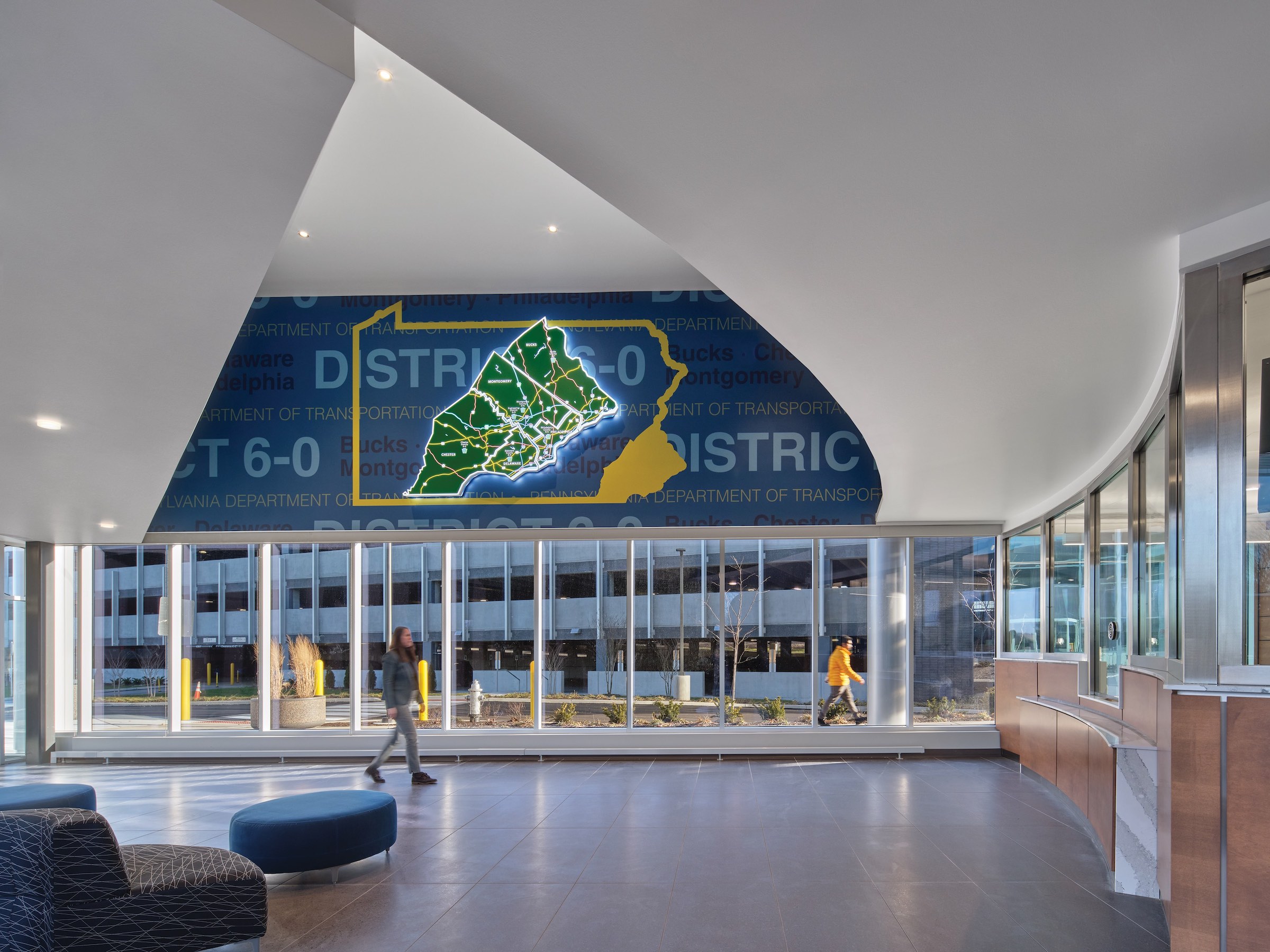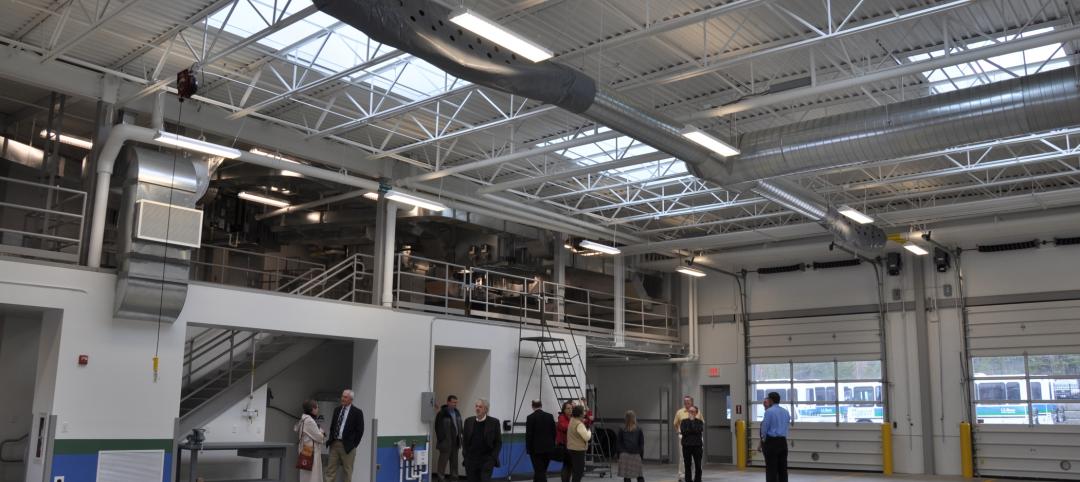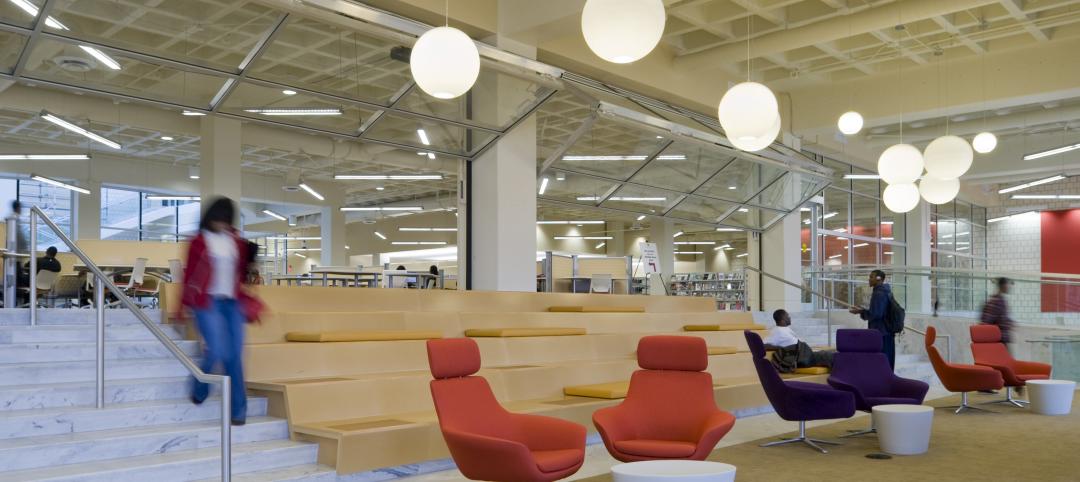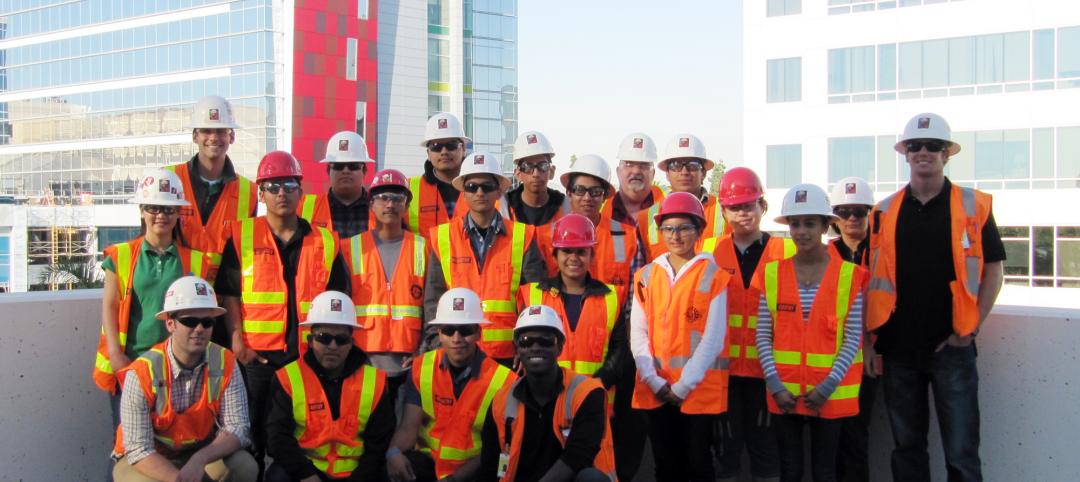In June, the Panama City–Bay County Airport and Industrial District awarded the general contractor Hensel Phelps the North Terminal Expansion project at the Northwest Florida Beaches International Airport. The firm will provide preconstruction services for an expansion that adds about 80,000 sf over two levels to the existing terminal. Hensel Phelps’ services include design reviews, market analysis, value engineering, development of a master project schedule, and development of the Guaranteed Maximum Price phase.
This is but one of several government-commissioned projects that Hensel Phelps is currently engaging. Its Government + Justice practice generated nearly $3.5 billion in revenue from government-related contracts in 2022, tops among all construction firms with government practices that year.
Jacobs has been expanding its government services practice for more than a decade, to the point where the firm’s board approved a plan in May to spin off that business into a separate entity called Critical Mission Solutions, a move that Jacobs expects to complete by October 31, 2024. Jacobs generates 31% of its total revenue from service contracts with U.S. federal agencies, or $4.6 billion in 2022. (Jacobs reported $406.8 million in government-related design contracts for that year.)
WSP, whose government-contracted design work netted $272 million last year, led a tri-venture design team and served as the designer of record for the preparation of a design-build RFP package for the 53rd Weapons Evaluation Group under Zone 3 at Tyndall Air Force Base in Florida, which was severely damaged by Hurricane Michael in 2018. The design includes a new headquarters and squadron operations, an F-16 aircraft maintenance hangar, a subscale drone facility, and parking aprons. Construction on this project began last year and is scheduled for completion in 2025. This project is part of a “reimagining” of the base after the hurricane destroyed 484 of its buildings.
The Army Corps of Engineers was also the client for the Department of Defense’s $248 million Army Institute of Public Health Command Laboratory Replacement at Aberdeen Proving Ground in Maryland, which opened in April. The 279,574-sf ZGF Architects-designed building on 20 acres, whose construction team included Gilbane Building Company and Walsh Group, is set up to respond to emerging environmental threats and health challenges for forces worldwide.
Exploring artificial intelligence as a tool
The passage, in 2021, of the bipartisan Infrastructure Investment and Jobs Act, coupled with last year’s passage of the Inflation Reduction Act, created an environment that has spurred spending for new construction as well as modernization of existing buildings. To cite one example, the General Services Administration, the federal government’s construction and property manager, has requested $21.8 billion in total budget authority for fiscal year 2024, including $10 billion from the Federal Capital Revolving Fund, which GSA uses to finance construction and renovation. If enacted, that total budget authority would be $11 billion more than in fiscal year 2023.
Nonresidential public construction spending, while only about a quarter of private-sector spending, has been growing at a much faster clip lately. In June, it was up 13.8% to $411.4 billion, with commercial and manufacturing the biggest subsectors, according to Commerce Department estimates.
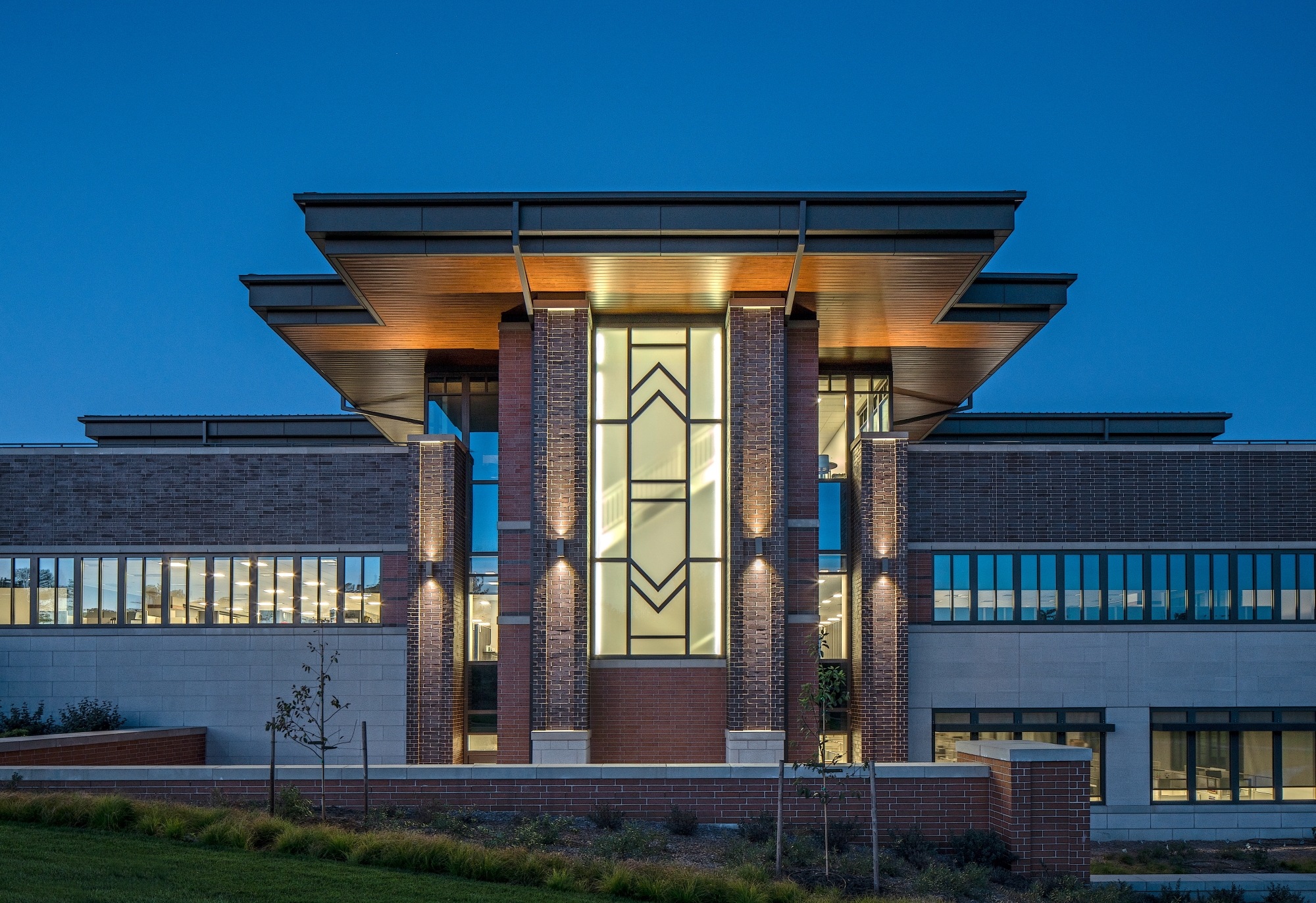
To position themselves competitively, AEC firms with government-sector practices have been focusing their attention on integrating technology into their services and operations, as well as improving their project management and personnel development methods.
Several firms seem to be beyond the kicking-the-tires stage on artificial intelligence. WSP says it’s been exploring AI and developing “scalable and controllable strategies” for its broader development. HDR’s architects are attempting to demonstrate how machine learning and AI can work alongside traditional labor to enable a sustainable, equitable future.
Kimley-Horn expanded the use of digital delivery—specifically, Digital Twin—for state Department of Transportation projects to minimize their complexities, cost, time, and risk. Digital delivery provides the DOTs with more accurate and detailed designs, reduces errors and conflicts, and improves communication and collaboration among project stakeholders.
Seeking a smaller carbon footprint on building projects
In June, GSA’s Green Proving Ground program, in collaboration with the U.S. Department of Energy’s Building Technologies Office, selected 20 technologies to test how they might help decarbonize real-world buildings. Among the seven areas that this year’s program homes in on are greenhouse gas accounting, operational and embodied carbon, onsite renewables, and window retrofits.
Those tests can be placed within a wider context of AEC Government Giants giving more attention to decarbonizing their projects. The engineering firm Syska Hennessy, for one, is a signatory to the MEP 2040 Challenge, and as such is focusing on the climate, decarbonization, and electrification by perfecting its energy and simulation modeling, which enables the firm to develop carbon-neutral net-zero buildings and predict project lifecycles.
In partnership with Prometheus Materials, Skidmore, Owings & Merrill introduced an algae-based bio-concrete that absorbs carbon. SOM says the material uses two natural mechanisms to sequester and store CO2 in material form: photosynthesis and carbonate mineralization.
DLR Group undertook a cross-disciplinary research mass timber prototype initiative that began with a Wood Innovations grant from the U.S. Forest Service in partnership with the University of Minnesota. This involved designers, engineers, developers, hoteliers, federal bodies, and educators; the top concerns they found were sound, structure, and safety. The research proved how mass timber can be a viable, structurally-sound, environmentally-friendly solution.
Knowledge is power in government construction
Even as GCs are expanding their payrolls, nonresidential construction continues to search for satisfactory answers to labor shortages. Finding and retaining workers across the job spectrum are major challenges for AEC firms, several of which took steps to improve their mentoring, training, career development, and information sharing.
Indianapolis-based Ratio Design conducted a year-long project management training program, during which it crafted a tailored program for its staff, and invested in outside consultants to assess current knowledge base and needs, develop curriculum, and assist in session development. As a result, internal content sessions were created with small group meetings that focus on peer-to-peer mentorship and senior staff transfer of knowledge.
McCarthy Holdings identified as a “primary obstacle” to its operations the consolidation of knowledge among individuals who were either retiring or lacked the capacity to train others. So the firm developed a customizable software platform called SiteShift Parking by McCarthy, a generative tool that empowers McCarthy’s parking structure teams to rapidly iterate through unique, adaptable layout options for clients in real-time.
Related Stories
| May 29, 2012
Thornton Tomasetti/Fore Solutions provides consulting for Phase I of Acadia Gateway Center
Project receives LEED Gold certification.
| May 24, 2012
2012 Reconstruction Awards Entry Form
Download a PDF of the Entry Form at the bottom of this page.
| May 9, 2012
Shepley Bulfinch given IIDA Design award for Woodruff Library?
The design challenges included creating an entry sequence to orient patrons and highlight services; establishing a sense of identity visible from the exterior; and providing a flexible extended-hours access for part of the learning commons.
| May 7, 2012
2012 BUILDING TEAM AWARDS: Audie L. Murphy VA Hospital
How a Building Team created a high-tech rehabilitation center for wounded veterans of the conflicts in Iraq and Afghanistan.
| May 2, 2012
Public housing can incorporate sustainable design
Sustainable design achievable without having to add significant cost; owner and residents reap benefits
| Apr 25, 2012
McCarthy introduces high school students to a career in construction
High school students from the ACE Mentoring Program tour the new CHOC Children’s Patient Tower in Orange, Calif.
| Apr 24, 2012
AECOM design and engineering team realizes NASA vision for Sustainability Base
LEED Platinum facility opens at NASA Ames Research Center at California’s Moffett Field.
| Apr 20, 2012
McCarthy completes Santa Barbara Cottage Hospital Replacement Facility
The new hospital’s architectural design combines traditional Santa Barbara Spanish colonial architecture with 21st century medical conveniences highlighted by a therapeutic and sustainable atmosphere.
| Apr 20, 2012
Century-old courthouse renovated for Delaware law firm offices
To account for future expansion, Francis Cauffman developed a plan to accommodate the addition of an 8-story tower to the building.


